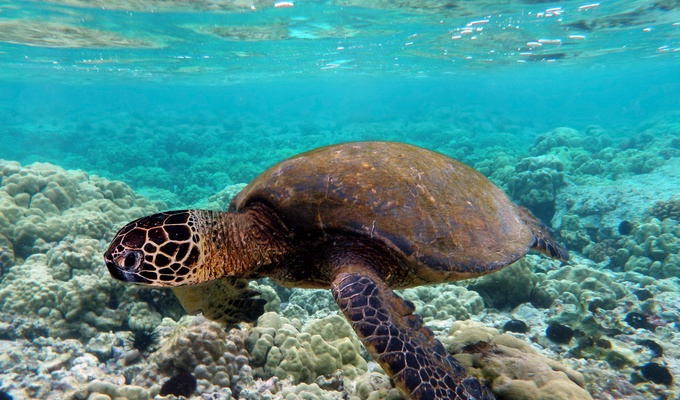The green sea turtle (Chelonia mydas), also known as the green turtle, black turtle or Pacific green turtle, is a species of large sea turtle found in tropical and subtropical waters worldwide. Known for its herbivorous diet as an adult, feeding primarily on seagrasses and algae, the green turtle plays a significant ecological role in maintaining healthy marine ecosystems. Historically, it has also been of substantial economic importance due to its use as a source of food, particularly in the production of turtle soup.
Commercial Exploitation
For centuries, green turtles were extensively hunted for their meat, which was considered a delicacy, and their fat, which gave turtle soup its characteristic gelatinous texture. Turtle soup was especially popular in Europe and North America during the 18th and 19th centuries. The commercial harvest of green turtles included both their capture at sea and the collection of their eggs from nesting beaches. The ease with which the turtles could be captured while nesting or grazing in shallow waters contributed to their overexploitation.
In the Caribbean and parts of Southeast Asia, green turtles were regularly harvested as part of local subsistence economies. Turtle meat, eggs, and shells were traded in local and international markets. The species’ slow growth rate, delayed sexual maturity, and the selective targeting of adult turtles, particularly nesting females, led to a sharp decline in populations during the 20th century.
Decline and Conservation
As green turtle populations plummeted, concerns over their survival grew. The species was eventually listed as endangered by the International Union for Conservation of Nature (IUCN) and became the subject of international conservation efforts. Various treaties and national laws, including the Convention on International Trade in Endangered Species of Wild Fauna and Flora (CITES), were enacted to curb the hunting and trade of green turtles and their products.
Many countries introduced legal protections, including bans on turtle hunting and egg collection, alongside the establishment of marine protected areas and nesting site monitoring. Conservation programs have focused on protecting nesting beaches, reducing bycatch in fishing nets, and promoting public awareness. Additionally, international campaigns aimed at reducing the demand for turtle products have been implemented.
